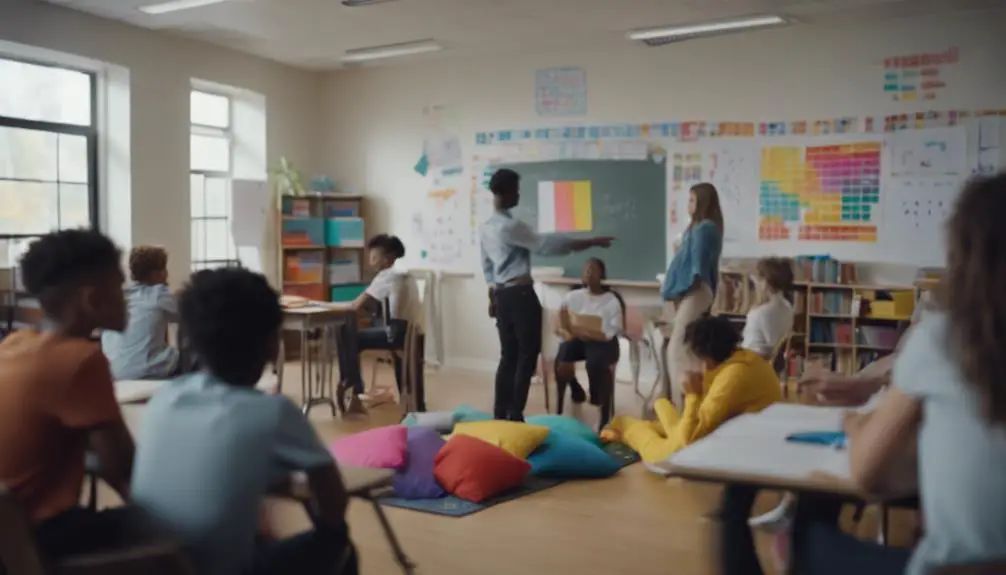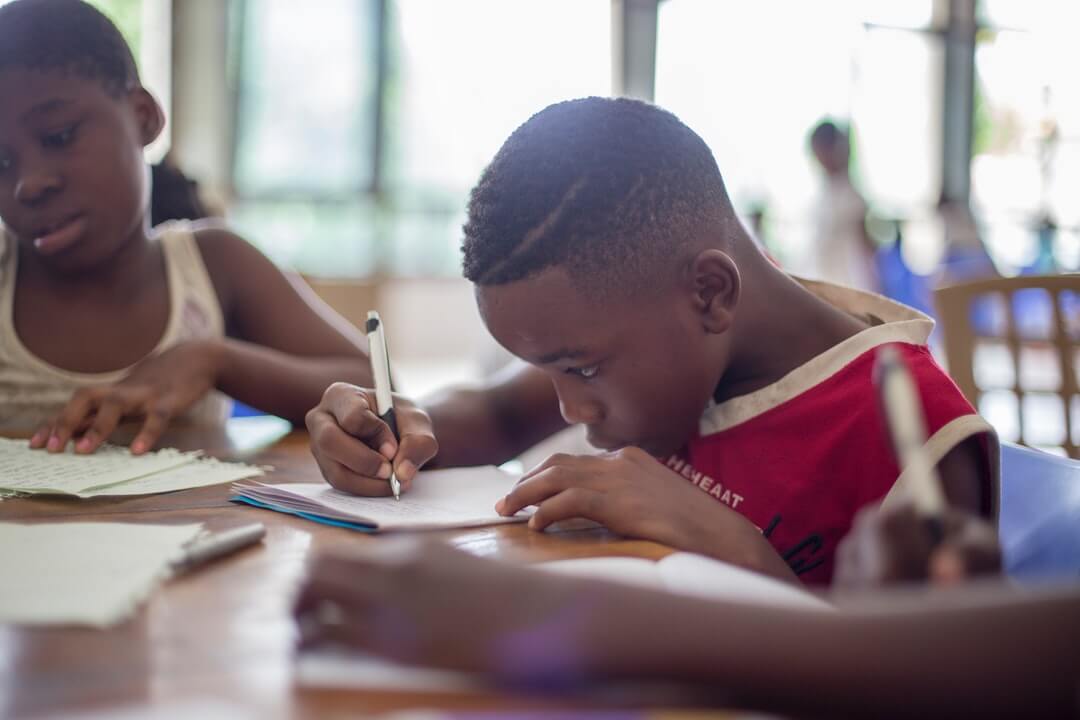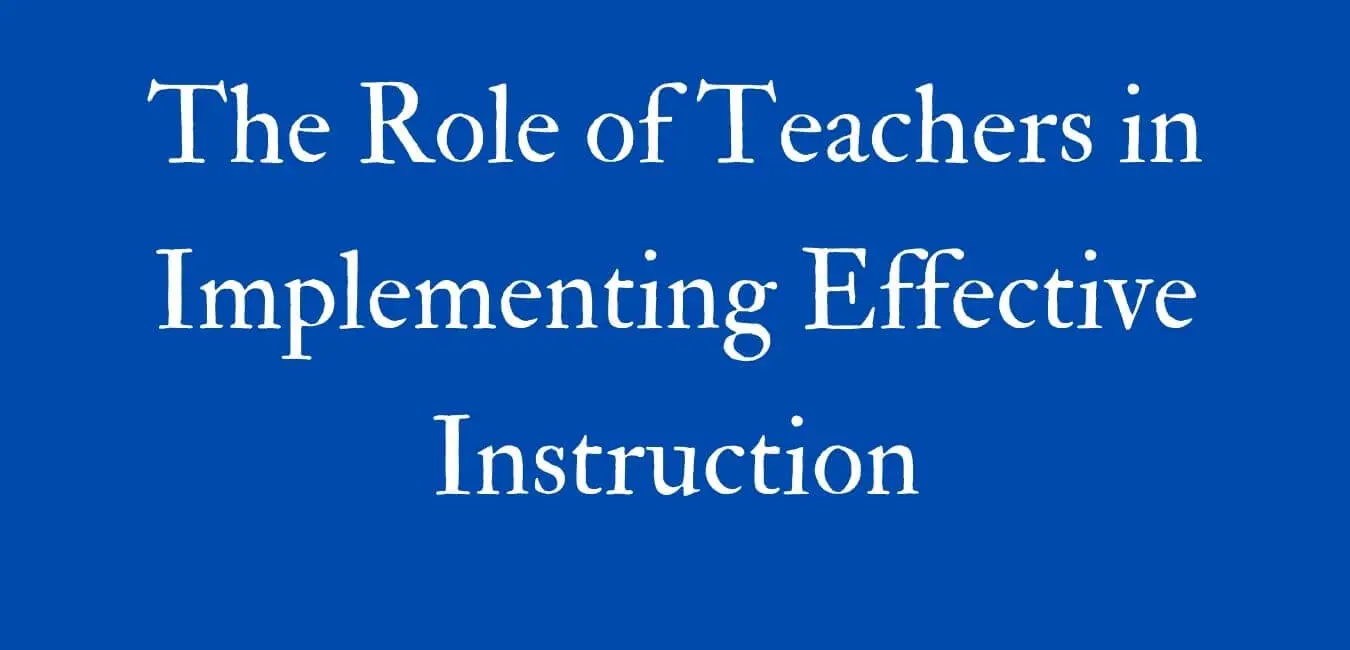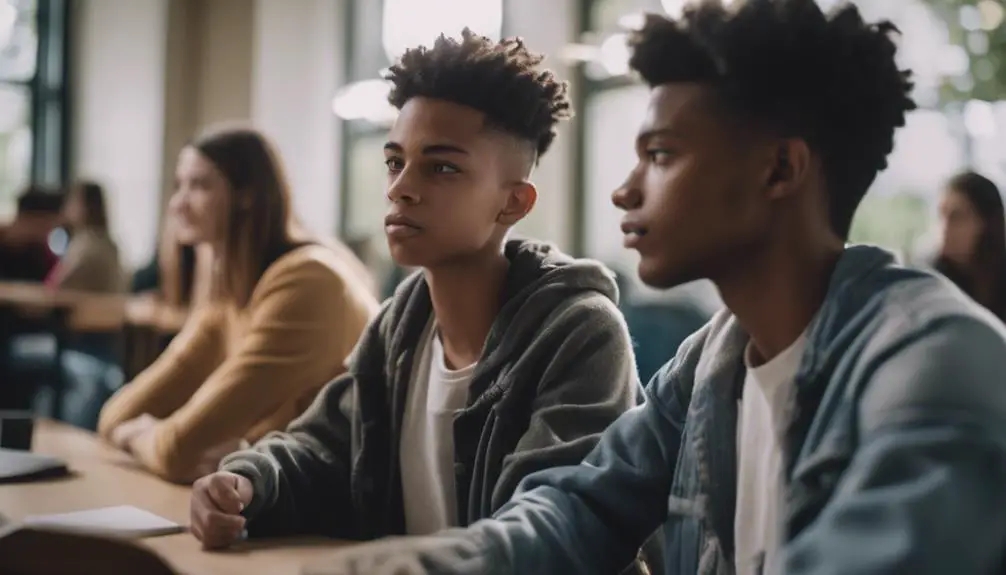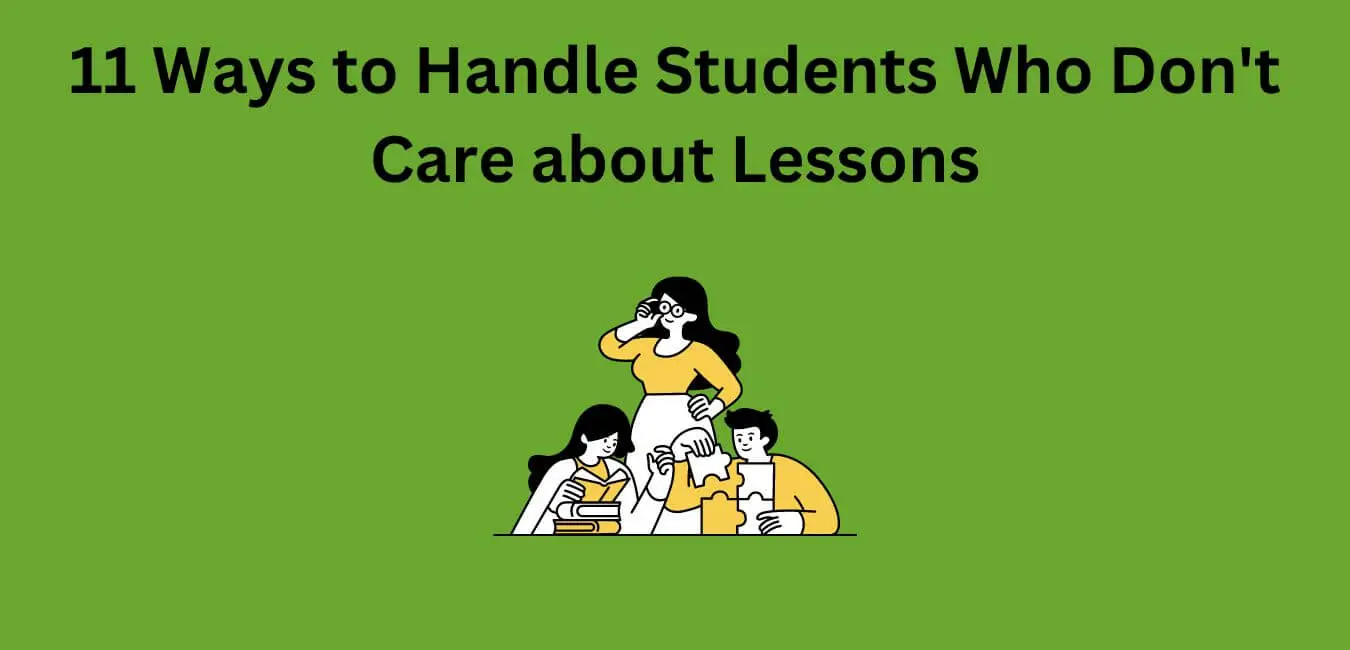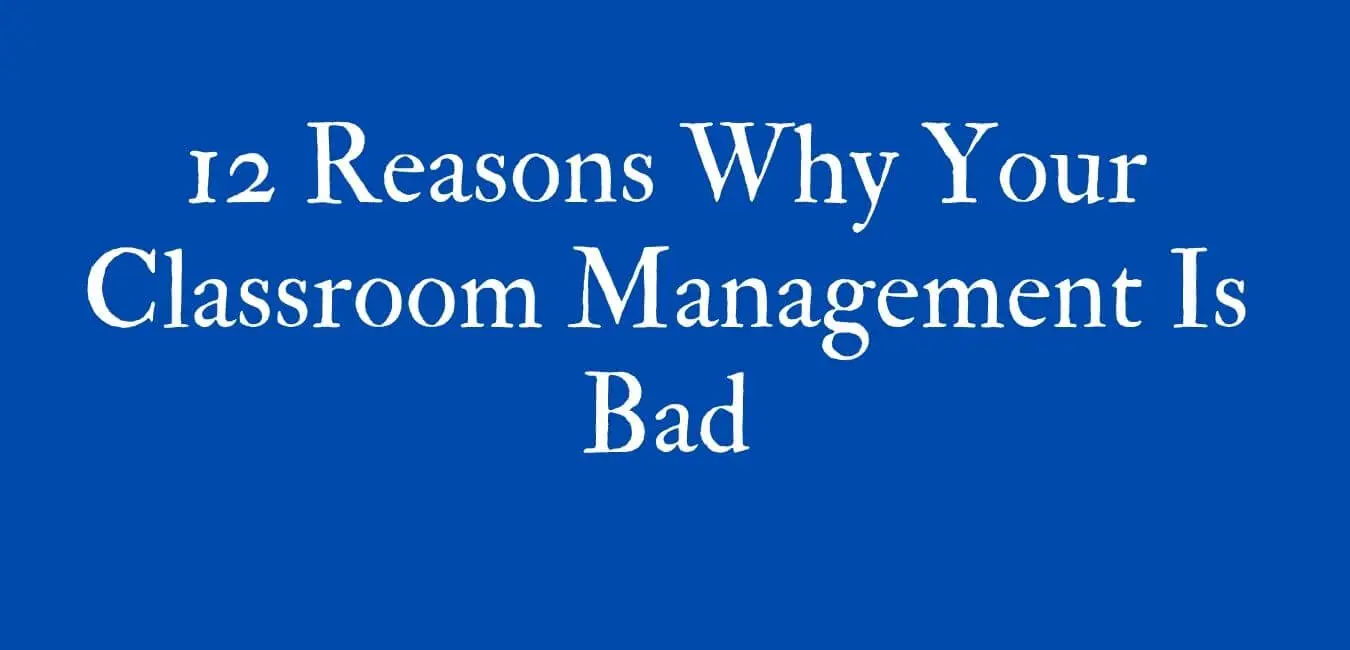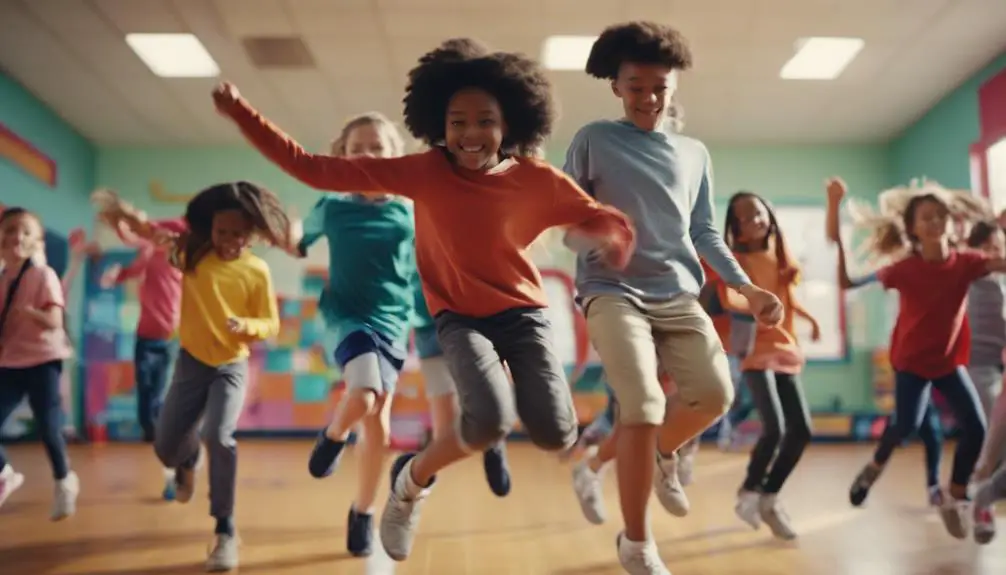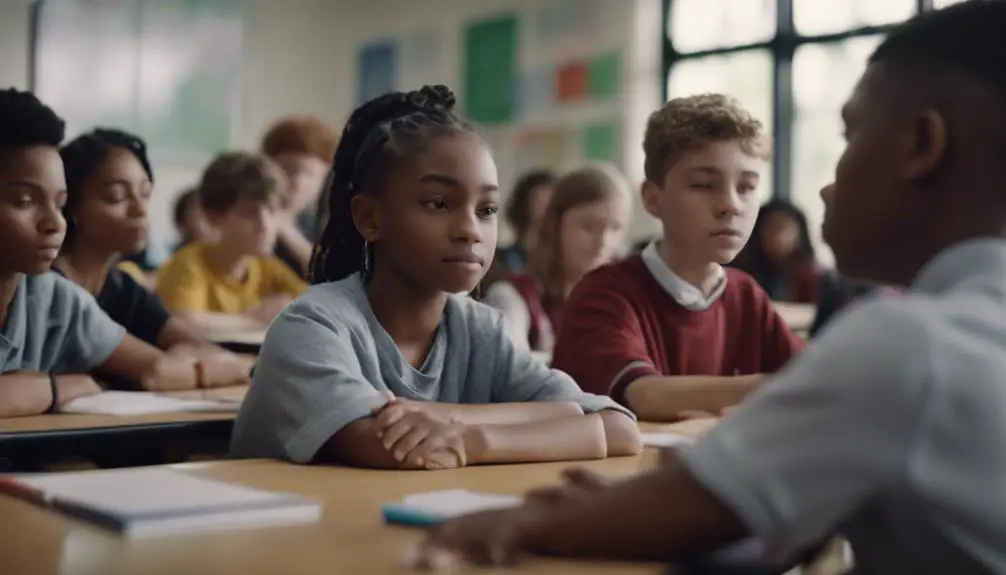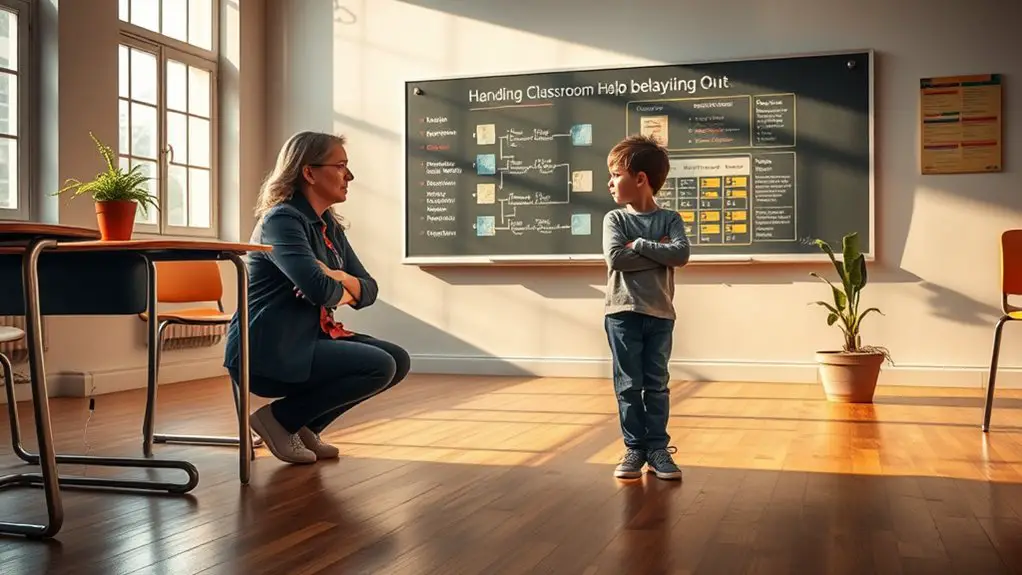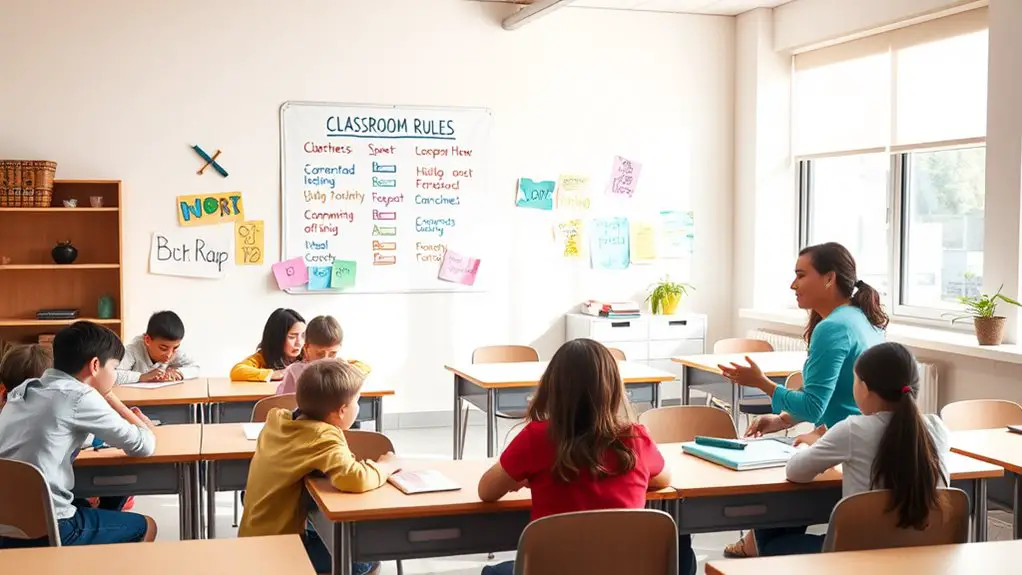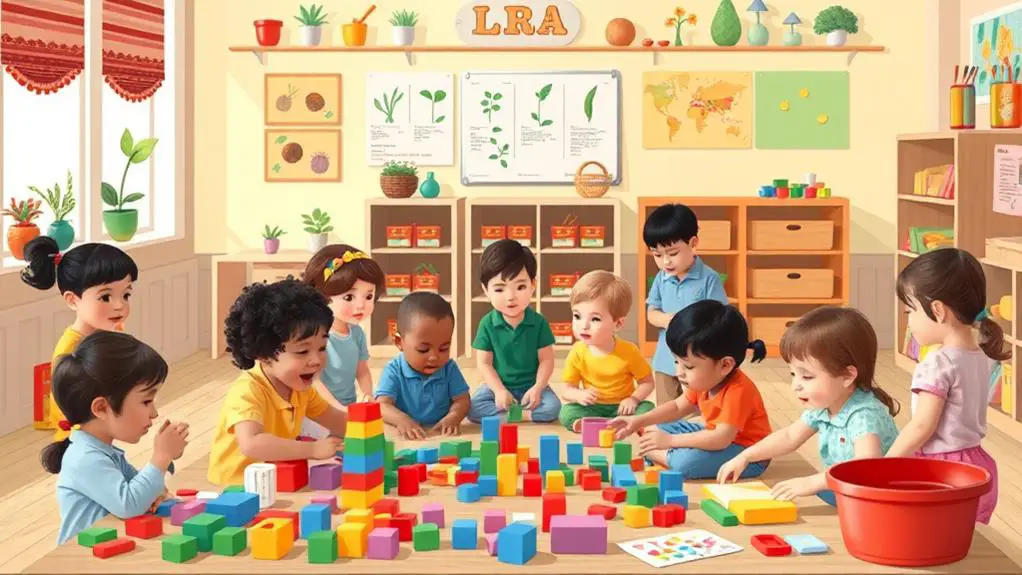Envision a student standing at the threshold of a lively classroom, pausing before engaging in a new routine. It’s crucial to teach students how to navigate transitions, as these moments can significantly influence their emotional and academic experiences. Establishing structured practices and incorporating visual aids can help students feel more at ease with changes.
This process involves various strategies that play a vital role in building their confidence and resilience, making it essential to examine these elements in depth. For instance, using a visual schedule can help students anticipate what comes next, reducing anxiety associated with uncertainty.
Role-playing scenarios can also provide students with a safe space to practice transitions before they occur in real-life situations. These hands-on approaches not only prepare students for change but also empower them to tackle challenges with a positive mindset.
Moreover, regular check-ins with students can foster open communication, allowing them to express their feelings about transitions and receive guidance. This supportive environment encourages them to embrace new experiences rather than shy away from them.
In essence, teaching effective transitions is about equipping students with the tools they need to navigate their educational journey with confidence.
Understanding Transition Skills
Understanding change skills is essential for assisting students in navigating the alterations in their educational paths. I’ve observed the difficulties students encounter when transitioning between grades or adjusting to new settings. By actively engaging students, we can facilitate these transitions, making them smoother and more manageable.
I prioritize the development of communication skills that enable students to articulate their emotions during these shifts. Social interactions are crucial, as they foster connections and establish support networks. It’s vital to consider individual needs and adopt personalized strategies that honor cultural backgrounds and developmental stages. Each student possesses distinct characteristics, and recognizing their histories can enhance their emotional resilience.
Cognitive flexibility is another critical component. When students adapt their thinking and approaches, they become more capable of managing unforeseen changes. Establishing clear behavioral expectations contributes to a structured environment where students can flourish.
I strive to teach them that transitions represent not just challenges but also opportunities for personal growth. By highlighting these essential change skills, I aim to empower students to embrace change with confidence and positivity, ultimately setting the stage for their success both inside and outside the classroom.
Importance of Transition Practice
When I consider the significance of change practice, it becomes clear that it plays a vital role in creating a sense of routine familiarity and boosting emotional readiness. These abilities equip students to handle transitions with assurance and ease. It’s essential to implement effective change practices in our teaching methods.
For instance, incorporating structured routines in the classroom can make students feel more secure as they face new challenges. Strategies such as providing clear schedules, setting predictable patterns for activities, and gradually introducing new concepts can foster an environment where students feel comfortable adapting to change.
Moreover, engaging students in discussions about their feelings regarding transitions can enhance their emotional preparedness. This could involve sharing stories about their experiences or conducting role-playing exercises that allow them to practice responses to various scenarios.
To support these practices, educators might consider using resources like social-emotional learning (SEL) programs or transition guides specifically designed for students. These tools can provide frameworks and activities that promote resilience and adaptability.
Ultimately, the goal is to create a supportive atmosphere that not only prepares students for change but also helps them thrive in dynamic environments.
Building Routine Familiarity
Establishing familiarity with routines is crucial for students as they face various changes during their educational experiences. When students have a clear understanding of what to expect, it alleviates anxiety and creates a conducive learning environment. Setting explicit routine expectations can help students feel secure in their surroundings.
Here’s my approach to fostering routine familiarity:
| Routine Element | Importance |
|---|---|
| Morning Meetings | These meetings set a positive tone for the day. |
| Shift Signals | They indicate what students should anticipate next. |
| Classroom Jobs | Assigning roles fosters a sense of ownership and responsibility among students. |
| End-of-Day Reflections | These reflections promote self-assessment and provide closure. |
| Weekly Schedules | A weekly outline offers a clear roadmap for students. |
Each of these components contributes to a structured environment where students can succeed. They learn to anticipate transitions and develop a sense of belonging. Reinforcing these routines not only teaches students about structure but also builds their confidence. It is gratifying to observe students thrive when they feel comfortable in their learning spaces, prepared to face new challenges.
Enhancing Emotional Preparedness
In the hustle and bustle of daily school life, it’s crucial for students to enhance their emotional preparedness for changes they may encounter. Emotional resilience empowers young minds to face transitions with confidence and adaptability. Introducing effective coping strategies can help them manage stress and reduce anxiety during these significant moments.
Incorporating self-regulation techniques into daily routines instills a sense of control. Mindfulness practices such as deep breathing exercises or guided imagery techniques can help ground students when they feel overwhelmed.
Regular emotional check-ins allow students to share their feelings and concerns, creating an environment where open dialogue is encouraged and supported.
Celebrating small achievements during times of change is also essential. Recognizing these victories boosts students’ confidence and motivates their continued growth. When students feel supported and acknowledged, they’re more inclined to embrace change rather than shy away from it.
Focusing on enhancing emotional preparedness equips students with the necessary tools to thrive in an ever-evolving world. This process nurtures their ability to confront challenges directly and cultivates a resilient mindset that will benefit them throughout their lives.
With compassion and understanding, we can guide them through these transitions, ensuring they feel empowered and ready for whatever comes next.
Strategies for Teaching Transitions
Effective strategies for teaching transitions can greatly enhance a student’s learning journey. One method that proves to be highly effective is the use of change games. These interactive activities not only make the process enjoyable but also allow students to practice moving from one task to another in a playful manner.
Role-playing activities also hold significant value; students can act out different scenarios, which helps them grasp various transitions more easily. Incorporating sensory breaks into the routine can help re-energize students, providing them with a moment to reset before facing new challenges.
Additionally, integrating technology can transform transitions into a more engaging experience. Utilizing apps or interactive platforms can make the process feel seamless and invigorating. Storytelling techniques can also be beneficial as they offer relatable narratives that illustrate the importance of transitions in everyday life.
Creating a supportive environment through peer modeling allows students to learn from one another’s experiences. Using environmental cues, such as visual timers or signals, can effectively prompt transitions and keep students on track.
Encouraging feedback is essential; students should feel comfortable sharing their thoughts on what strategies work well and which ones do not. Mindfulness practices can also be integrated to help students maintain focus during these shifts.
Visual Supports and Tools
When considering visual supports and tools, it becomes clear how crucial they’re in assisting students to manage transitions effectively. This discussion will cover various types of visual supports, a summary of useful tools, and practical strategies for implementing them. Utilizing these resources can clarify changes and make them more approachable for students.
Visual supports can include charts, schedules, and diagrams that help students understand what to expect during transitions. Tools such as visual timers and graphic organizers can further enhance their ability to process information. For instance, using a visual schedule can help students anticipate upcoming activities, reducing anxiety and fostering independence.
In practice, incorporating these visual aids requires thoughtful integration into daily routines. Teachers can start by introducing a visual schedule in the classroom to outline the day’s activities. This helps students know what comes next, making transitions smoother.
Moreover, selecting appropriate tools is vital. For example, using a colored timer to indicate the end of an activity can provide a clear visual cue, signaling it’s time to wrap up. This method not only aids in time management but also reinforces the concept of transitioning between tasks.
Types of Visual Supports
Visual supports are crucial tools that assist students in navigating changes effectively, particularly when their routines shift. Utilizing different types of visual supports can significantly enhance their experiences during transitions. Here’s an overview of some effective tools:
| Type of Visual Support | Description | Purpose |
|---|---|---|
| Visual Schedules | A graphical representation of daily activities. | Enables students to anticipate changes and manage their time effectively. |
| Transition Cards | Cards illustrating the next activity or location. | Offers a clear indication of the upcoming event, reducing anxiety about transitions. |
| Social Stories | Brief narratives that describe social situations. | Prepares students for specific changes by providing context and understanding. |
Incorporating techniques such as color coding can enhance these tools by making them more visually stimulating. Establishing environmental cues, like designated areas for specific activities, can further aid in the transition process. Countdown timers serve as effective signals for the conclusion of an activity, while visual schedules present a straightforward way for students to see what is next. Engaging in role-playing activities allows students to practice changes in a fun, low-pressure setting. Implementing these visual supports fosters a more supportive learning environment for students, ultimately easing their transition experiences.
Effective Tools Overview
Shifts can present challenges for students, but several tools can facilitate these transitions. Incorporating change activities, such as visual schedules and environmental cues, significantly enhances student engagement.
For instance, using role-playing scenarios allows students to practice these shifts in a controlled setting, enabling them to experience the process without the pressures of actual life situations.
Sensory supports, including fidget tools and calming visuals, can provide much-needed comfort during transitions. I frequently implement feedback mechanisms to assess students’ feelings about their shifts, which helps me tailor my approach to better meet their needs.
It is important to involve parents in the change process. Keeping them informed and engaged fosters consistency between home and school, which can greatly benefit students.
Additionally, peer mentoring is a valuable strategy; pairing students creates a supportive atmosphere where they can learn from one another and share experiences.
These practices not only ease transitions but also promote a positive learning environment, ensuring that students feel supported throughout the process.
Implementation Strategies Explained
Implementing visual supports and tools effectively can significantly ease transitions for students. When we integrate these strategies with thoughtful consideration, we create a more seamless experience during changes. One of the most beneficial tools is a visual schedule. These schedules enable students to anticipate upcoming activities, which helps them gradually adjust to new routines. By visually presenting what to expect, we can alleviate anxiety and bolster their confidence.
Another useful tool is color-coded charts or icons. These resources can break down complex information into more manageable pieces. For instance, many students respond positively to a color-coded behavior chart that outlines expectations in a clear manner. This simplicity provides a sense of security and understanding, making transitions feel less daunting.
Incorporating social stories can also be very effective. These narratives prepare students for changes by detailing what’ll happen and how they’re expected to react. It’s crucial to present these tools consistently, allowing students to depend on them during transitions.
Ultimately, by carefully implementing these visual supports, we empower our students to handle change more effectively. When we approach transitions with intention and care, we not only teach but also foster resilience and independence in our students.
Role of Routine and Consistency
Establishing a consistent routine can significantly aid students in navigating changes effectively. I’ve witnessed the advantages of routine not only for the students but also for the educators who support them. When students are aware of what to expect, they tend to feel more secure and self-assured, which leads to smoother transitions.
Consistency plays a crucial role in creating a stable environment where students can flourish. For example, I allocate the same time each day for specific activities, providing students the opportunity to prepare mentally and emotionally before they shift to something new. This predictability helps them feel anchored, making it easier for them to manage unexpected changes.
Furthermore, routines promote a sense of belonging among students. When they recognize that they’re part of an organized system, they’re more likely to engage and participate actively. It’s inspiring to observe their growth as they become familiar with these patterns, ultimately enhancing their resilience.
As we strive to enhance our support for students, prioritizing routine and consistency is essential. Empowering them to face changes with confidence not only smooths their educational journey but also enriches their overall experience.
Encouraging Peer Support
Many students perform better when they’ve solid support systems in place, making peer support an essential element for successful transitions. I’ve witnessed how peer mentorship can create a sense of belonging and enhance self-confidence. Encouraging students to participate in collaborative learning fosters environments where they feel secure in sharing their thoughts and ideas.
Incorporating group activities enhances social interactions and facilitates the development of relationships. These connections are instrumental in helping students adapt to changes more effectively, knowing they’ve someone to rely on. I often highlight the significance of positive feedback within team dynamics. A simple word of encouragement from a peer can greatly influence a student’s motivation and resilience.
To cultivate this encouraging atmosphere, I invite students to take on mentorship roles. By guiding each other, they can exchange experiences and strategies that alleviate the fear of change.
When we establish these peer support systems, we not only assist individuals but also strengthen the community as a whole. Ultimately, empowering students to support one another creates an environment where everyone can succeed together.
Monitoring and Assessing Progress
Monitoring students’ progress during shifts is vital for understanding their unique needs and challenges. Consistent tracking of progress is essential for supporting each student’s growth. Utilizing a range of evaluation tools allows me to collect data that informs my teaching practices effectively. For example, I frequently use observation techniques to assess how students adapt to new environments or tasks.
Feedback methods are another important aspect of this process. I promote self-reflection among students, enabling them to assess their understanding and pinpoint areas that require improvement. This practice not only empowers students but also provides me with valuable insights for analyzing their progress.
Setting goals collaboratively is significant as well. By working together to establish realistic objectives, I help students maintain motivation and concentration on their learning paths. Conducting regular performance evaluations allows us to measure advancement and modify our strategies when necessary.
In essence, the combination of these approaches fosters an environment where students can thrive. Monitoring and evaluating their progress goes beyond mere data collection; it cultivates a supportive atmosphere that encourages growth and resilience.
Conclusion
In teaching students about transitions, fostering a supportive environment is crucial. Utilizing visual aids, establishing consistent routines, and promoting peer support can significantly assist students in managing changes with self-assurance. This approach serves as a reliable foundation as they embark on new experiences. Recognizing the importance of each incremental step is vital; with patience and determination, we can effectively lead them through these transitions. Working together, we can transform challenges into valuable opportunities for personal and academic development. For instance, incorporating visual schedules can help students anticipate upcoming changes, making them feel more prepared and less anxious.

